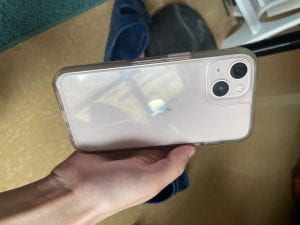Consumer Product Analysis
As an avid seagoer I love anything to do with the ocean. I aim to be as environmentally sustainable when on the water, however, this is almost impossible in this day and age due to everything being made for purpose, rather than sustainability. I believe that this must be flipped and we must start taking sustainability into account as a priority, whilst still producing a product that serves its designated purpose.
The difficulty with fishing gear is that there are many different types of braided lines depending on what the targeted species is, what the weathers like, how far offshore, and many other variables, and these different types of line are all made with different materials. Some lines such as monofilament have life spans of 2 to 3 years, whereas fluorocarbon lines can last up to 10 years. Fluorocarbon is actually the term given to a broad family of compounds including, carbon, chlorine, fluorine, and other synthetics made from hydrocarbons. Fluorocarbon is also used in Freon which is a refrigerant in air cooling systems, evidently it is not good for you. Hence, Freon was banned in the US January 1st 2020, due to health concerns and its role in destroying the ozone layer. However fluorocarbons are still used legally in the international fishing industry. Monofilament hence the name, is comprised from one single strand of line that may contain multiple different polymers chemically fused together, the most common medium for mono line is nylon. Which uses enormous quantities of water to be produced and also emits nitrous oxide which is a greenhouse gas roughly 300 times as potent as carbon dioxide. Monofilament is admired for its flexibility which makes it easier to cast, whereas fluorocarbon line is used for its sturdiness and is more commonly used when targeting larger fish or for rougher conditions.

In our oceans, fishing gear makes up roughly 10% of the total pollution. This is a very large percentage for solely one industry. Discarded fishing nets and fishing lines have been given the term “Ghost Fishing Gear”, this really implies how these discarded items are haunting our seas and destroying some of the most important habitats on the planet. If we can produce a product that can help reduce this pollution it would be beneficial to restoring sea life populations and helping rejuvenate coral reefs.
During my research I found that a lot more fishing gear companies have started to experiment and transition to biodegradable fishing lines, in particular Eagle Claw Tackle which is the brand I use personally. Unfortunately many will not make the conversion to sustainable gear as very few anglers will want to buy a product that is designed to break. In response to this Eagle Claw made biodegradable lines much more affordable than other types of braid, and also imposed a 10 month guarantee on all lines made by them. I believe that this is most definitely the right approach to get people to use the product, however I also believe that people need to be made more aware of what consequences their actions have on the environment. Furthermore, government bodies should establish laws to prohibit the use of fishing gear with trace toxic materials, and aim to create a fishing industry that is completely 100% sustainable.



















